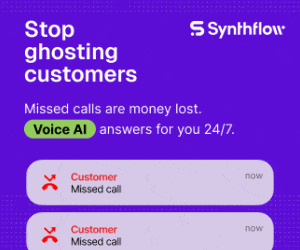David Mason at Odigo explores the ABCs of CX – Agent experience, Business experience, and Customer experience – to help enhance your grasp of CX fundamentals.
In today’s competitive market, delivering an exceptional customer experience (CX) is crucial for success.
While many contact centre decision-makers are eager to adopt AI and other advanced solutions, the lack of a solid foundation can undermine these efforts. Understanding CX basics is vital for an effective strategy.
Understanding CX Basics: The Foundation of Success
The Importance of a Strong Foundation
An amazing agent can deliver outstanding personalised care, but if that interaction exists in a repetitive chain of events, where progress is lost, and frustration mounts, it amounts to a waste of talent.
A strong CX foundation ensures the efforts of agents contribute to a cohesive experience and allows advanced technologies like AI and machine learning to live up to their potential.
Technology ecosystems also need to be up to scratch – ROI on AI projects depends on the data that comes from integrated solutions, eliminating departmental silos and isolated platforms.
CX is a major differentiator; standards of care and service drive loyalty. While sub-standard experiences might seem like an economy, lost income, lost customers, poor reputation and even compensation are significant hidden costs. So, what are the CX basics?
Defining CX Basics
When trying to improve or assess CX, three distinct sets of needs and perspectives should be considered to achieve the right balance of efficiency and quality. Essentially the ABC of X refers to those three core perspectives:
- Agent experience
- Business experience
- Customer experience
Each of these is the sum of numerous events, touchpoints and interactions and there is often overlap, interplay, and interdependency among the factors which influence them. Enhancing one area can, more often than not, benefit the others.
What qualifies as a good experience in each context, though, depends on the goals of that experience. Let’s explore each in turn.
Agent Experience: Empowering Your Front Line
What is Agent Experience?
Agent experience is the overall work experience from recruitment, to onboarding, fulfilling day-to-day responsibilities, training, supervision, technology and company culture.
What Goals Influence Agent Experience?
Satisfaction and sense of purpose at work. For many agents, this means professional growth, progression and recognition, not just a paycheck and job stability.
What Do Agents Need to Achieve Those Goals?
From day one, agents need comprehensive training, effective tools, and ongoing support to maintain engagement and nurture professional skills and success.
Let’s look at a few of those factors in more detail.
Onboarding and Training
Effective onboarding and continuous training equip agents with skills to excel during customer interactions. While onboarding is company-specific, ongoing development should be personalised.
Onboarding should give agents a solid grounding in day-one skills, enabling them to achieve small successes right away.
It can also instil company culture, aligning approach with values so agents can be true brand ambassadors.
Long-term training and development should be tailored to individual strengths and interests. This means continuous omnichannel performance monitoring and one-to-one coaching.
The first part can easily be automated, but the second is where supervisor support provides the human touch which helps agents feel valued and engaged, directly contributing to their job satisfaction and sense of purpose.
Creating a Sense of Purpose
When agents can see the significance of their role, they are more motivated and engaged. This is something which needs ongoing nurturing though; feedback, recognition and an active workplace culture are all important.
Companies that communicate around their values but fail to embody them can struggle to retain agents and customers!
Agent satisfaction comes across during interactions and their engagement and dedication passes on that sense of satisfaction to customers.
Technology and Performance
This is about simplification, integration, support and deflection:
Simplification
Systems should be intuitive and user-friendly to reduce the cognitive load on agents. This includes having streamlined interfaces that minimise the need for multiple logins and redundant tasks, allowing agents to focus more on customer interactions.
Integration
All platforms and systems should be integrated and/or synced in real-time to minimise duplicating data entries and switching between screens. Customer interactions should be compiled into a single omnichannel history, providing a holistic view for agents and supervisors.
Support
Supervisors, QA, and performance monitoring tools should be in place to give supervisors the visibility to step in, review, or reward agent performance. Continuous feedback and support help agents improve and stay motivated.
Deflection
Effective use of self-service options can remove low-satisfaction and monotonous tasks from agents’ day-to-day activities.
This can include chatbots, FAQs, and automated responses that handle routine queries, allowing agents to focus on more complex issues.
The effectiveness of technology can make or break interactions for even the most talented agent.
Business Experience: Building a Solid Infrastructure
What is Business Experience?
Business experience encompasses the entire scope of interactions a business has with its employees, customers, suppliers, and service providers.
In the context of contact centres, this includes everything from marketing and service provision to management, operations, and financial performance, all supported by reliable technology.
What Goals Influence Business Experience?
Profit is the primary goal, influenced by customer loyalty, lifetime value, business/operational efficiency, and brand awareness and reputation.
While a business may be driven by ethical or eco goals and aspirations, staying power in the market and the capacity to do good depend on profit!
What Does a Business Need to Achieve Those Goals?
To achieve these goals, businesses need effective and efficient communication with customers, partners and employees.
This relies on contact centres, underpinned by a solid technological infrastructure, integrated systems, multiple communication channels and reliable technology.
More specifically this includes cloud-based solutions, omnichannel strategies, and data utilisation for informed decision-making.
Let’s look at a few of those factors in more detail.
Cloud-Based Solutions
Adopting cloud-based platforms offers flexibility, scalability, and reliability essential for a modern contact centre. These solutions are cost-effective for scaling services in line with demand and company growth.
Their cloud-based nature enables hybrid working and ensures that updates and upgrades provide ongoing access to the latest software versions. This flexibility and reliability support business efficiency and help maintain customer loyalty.
Omnichannel Strategies
An effective omnichannel strategy ensures seamless customer interactions across various channels, enhancing the overall experience by delivering convenience to customers and an optimally efficient channel mix to businesses.
By integrating all communication channels, businesses can provide a consistent and personalised experience, regardless of how customers choose to interact.
This reduces repetition, frustration, and streamlines the journey of customers toward purchase or resolution, ultimately supporting business goals.
Data Utilisation and AI Integration
Utilising data effectively is crucial for AI and machine learning. Accurate data enhances personalisation and predictive analytics, driving better outcomes and more efficient contact centre management.
The key is to eliminate data silos, integrate core platforms, and use AI orchestration to leverage data to its full potential.
A comprehensive data strategy supports informed decision-making and operational efficiency, ultimately contributing to profitability.
Customer Experience: Designing the Perfect Journey
What is Customer Experience?
Customer experience is the cumulative effect of a customer’s interactions and touchpoints with a brand, product, or service, encompassing the entire customer journey from awareness to post-purchase.
What Goals Influence Customer Experience?
Satisfaction is the key goal, which can come from resolving a problem, satisfaction with a purchase, product, or service, or simply the satisfaction of ticking off a task like paying a bill, which is often the case in the public sector.
What do Customers Need to Achieve Those Goals?
To achieve these goals, customers need smooth and consistent interactions across all channels, clear communication, and personalised experiences.
Businesses must understand customer intent and design journeys that meet and exceed customer expectations.
Let’s look at how to help customers achieve their goals.
Know Your Customer
Researching and understanding customer demographics and personas helps tailor interactions to meet their needs and preferences.
By gaining insights into customer behaviour and expectations, businesses can create more effective and personalised experiences, fostering loyalty and satisfaction.
Certain demographics, for example, have a higher affinity for digital channels and others are drawn more specifically to SM.
Understanding Customer Intent
Identifying contact drivers is central to an effective customer journey. If companies try to solve the wrong set of problems, resolution will be slow and awkward.
It also prevents organisations from leveraging proactive strategies. Understanding why a customer is making contact often impacts the ideal choice of channel, agent, and how to best leverage AI.
Addressing customer intent accurately improves satisfaction and streamlines interactions. One way to start cataloguing intents is to integrate speech analytics into an IVR and simply ask ‘What is the reason for your call today’.
Customer Journey Design
Once the real contact drivers have been identified, mapping and optimising the customer journey ensures a smooth and satisfying experience from start to finish.
By using KPIs and feedback loops, businesses can analyse each touchpoint and interaction, identifying pain points and opportunities for improvement. This leads to a more cohesive and enjoyable customer experience.
Author: Odigo
Published On: 13th Aug 2024 - Last modified: 16th Dec 2024
Read more about - Guest Blogs, David Mason, Odigo















